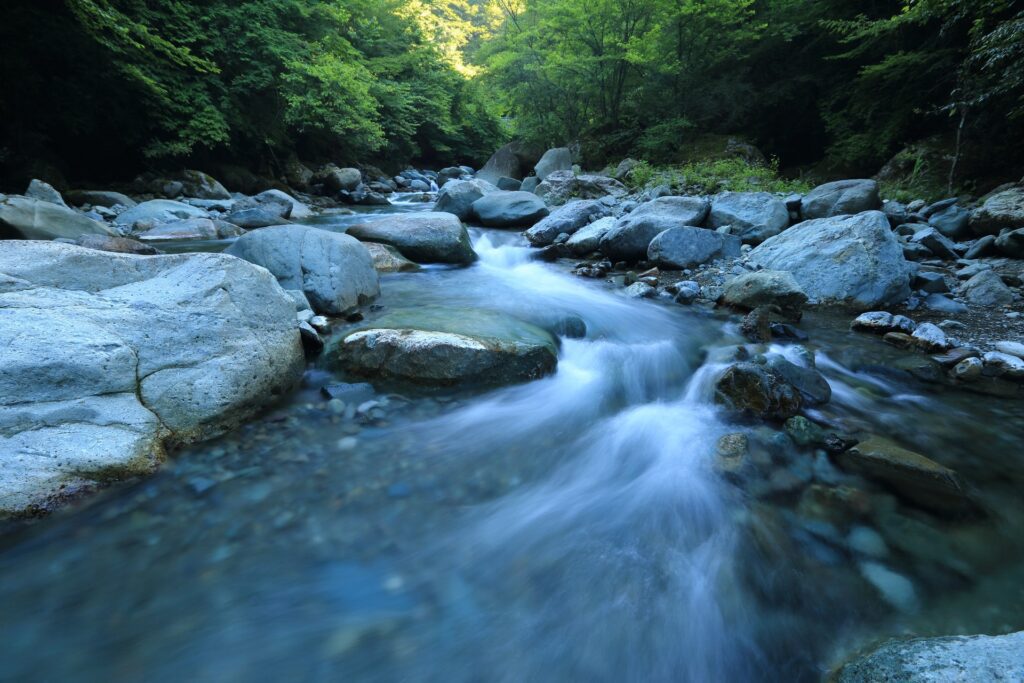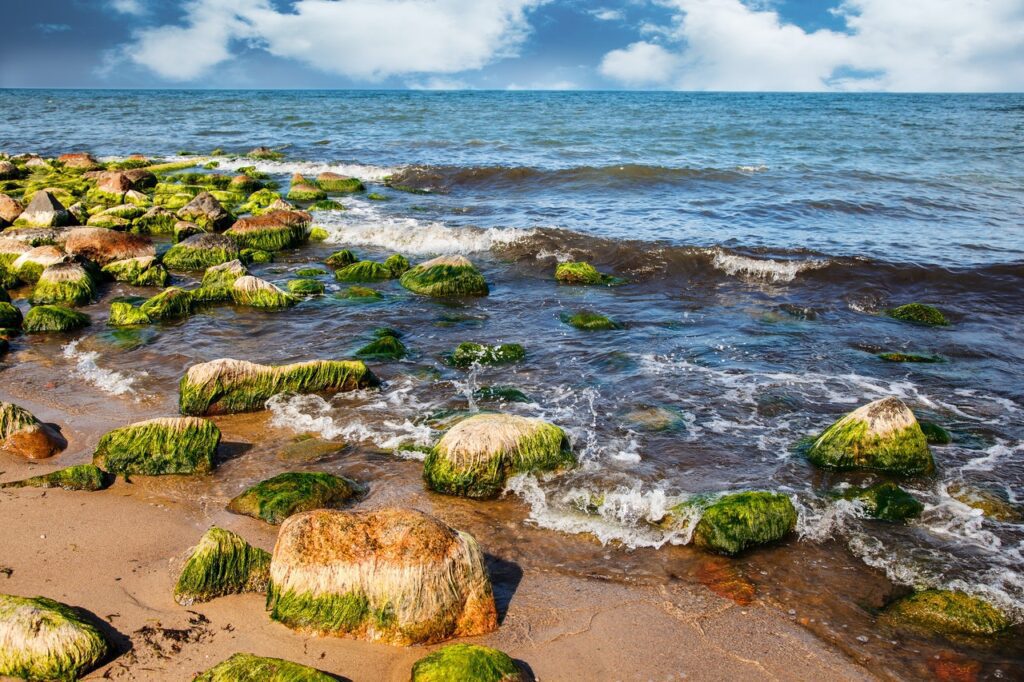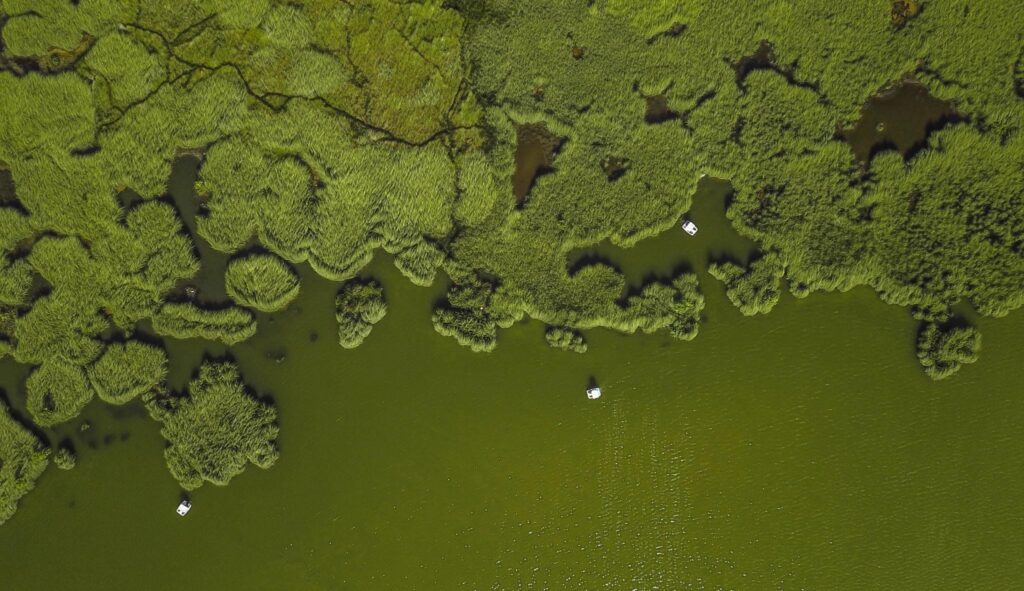02/01/2022 | Environmental | 9 MINUTE READ
Understanding Surface Water and the Effects of Eutrophication and Algae

When you hear the term “surface water”, this refers to any water that’s present on the earth’s surface, which extends to ocean salt water as well as freshwater in lakes, rivers, and streams. Continuous monitoring, remote monitoring, and sampling/lab testing are all used to collect and analyze water quality data using a variety of sensors. A source of this water can exist for part of the year or for the entirety of the year. Even though the ocean is comprised of saltwater, it’s still considered to be surface water.
It’s important to understand that surface water is comprised of water runoff and precipitation. Surface water is part of the hydrologic cycle, which involves water moving to and from the surface of the earth. While water runoff and precipitation feed into surface water, some of this water is taken away via seepage and evaporation. The water that seeps into the ground from the surface is known as groundwater.
Surface water has a wide range of different applications. This type of water is mainly used as drinking water, for various irrigation uses, to cool certain types of electricity-generating equipment, and to support thermoelectric power. Right around 74% of the water that’s used in the U.S. comes directly from surface water. An estimated 1.2% of fresh water in the world is surface water. This guide takes a closer look at the different types of surface water as well as the factors that can affect the quality of this water.
3 Main Types of Surface Water
There are three main types of water that exist on the earth’s surface, which include perennial water, ephemeral water, and man-made water.
1. Perennial
This is permanent water that lasts throughout the entire year and is naturally replenished by groundwater at times when there hasn’t been much precipitation in recent days/weeks.
2. Ephemeral
Ephemeral water is semi-permanent water, which means that it only persists for a specific period of the year. This type of surface water can be found in lagoons, water holes, and small creeks.
3. Man-made
This type of surface water is mainly found in different types of artificial structures. These structures primarily include constructed wetlands and dams.
How Eutrophication Affects Surface Water
Eutrophication is a process that occurs with surface water wherein excessive amounts of algal and plant growth take place because of at least one limiting growth factor increasing in availability. The limiting growth factors that are necessary for photosynthesis include nutrient fertilizers, sunlight, and carbon dioxide. The eutrophication process is a lengthy one that occurs over hundreds of years. As rivers and lakes age, they will invariably become filled with all different kinds of debris. While this process was once very slow and difficult to notice, eutrophication has accelerated at a rapid pace over the past 50 years as a result of higher industrial and agricultural activity. These activities have produced excessive amounts of limiting nutrients, the primary of which are phosphorous and nitrogen.

Three Main Factors of the Eutrophication Process
The three main factors of the eutrophication process include fertilizers, the discharge of wastewater, and the lessening of self-purification capacity.
Fertilizers
When looking specifically at fertilizers, the widespread use of fertilizers for agricultural purposes leads to rapid accumulation of various nutrients. If these nutrients are found in high concentrations, the ground itself can no longer properly assimilate the nutrients. Whenever it rains, the precipitation carries the nutrients into groundwater and rivers, both of which eventually reach surface water.
Discharge of Wastewater
As for the discharge of wastewater, this issue occurs when wastewater is sent into surface water by industrial and municipal facilities. While the EPA has certain standards that facilities must meet before wastewater can be discharged, these standards aren’t always in place throughout developing countries, which means that wastewater can be discharged before it has been treated. When wastewater is sent into surface water, high quantities of nutrients enter the water at the same time, which results in rapid algae growth.
Lessening of the Self-Purification Capacity
The third factor in the eutrophication process involves the lessening of self-purification capacity, which has occurred because of rivers and lakes becoming increasingly polluted. Over time, lakes and rivers are contaminated by human garbage and organic material. These contaminants have the ability to absorb high quantities of pollutants and nutrients. When these substances accumulate in surface water, the interaction between foreign objects and the water itself increases. The end result is that nutrients that are found at the bottom of surface water will become resuspended. In general, water is comprised of some basic nutrients like oxygen and hydrogen. However, surface water can also consist of certain minerals, the primary of which include magnesium, calcium, zinc, copper, and sodium. The main method of determining the quality of surface water is to identify the concentration of nutrients.
When inorganic nitrogen and phosphorous are at high levels, aquatic plants will grow quickly. Keep in mind that the rapid growth of aquatic plants can lead to adverse issues with any species of fish in the bodies of water. Aquatic plants use dissolved oxygen while growing. If there is too much algae in the water, oxygen concentrations will likely be low, which makes it more difficult for fish to get the oxygen they need to survive.
One type of algae that you should be aware of when it comes to surface water is cyanobacteria, which is able to directly perform photosynthesis. These algae are known as blue-green algae. Since these algae are considered to be bacteria, they are relatively small on their own.
In most cases, cyanobacteria grow in colonies, which make them visible on a body of surface water. You can naturally find cyanobacteria in every type of water. Along with fresh water, these organisms also live in marine water and brackish water. The only thing that’s required for cyanobacteria to grow is sunlight. As such, surface water can be the ideal environment for this type of algae to grow.

How Does Algae Affect Surface Water?
Algae are aquatic organisms that can perform photosynthesis. The most common form of algae includes pond scum, seaweed, and algal blooms, the latter of which is only found in lakes. As touched upon previously, it’s possible for algae to grow in any body of water, which includes all freshwater and saltwater sources. There are some core characteristics that cause certain organisms to be classified as algae, the primary of which involves the lack of stems, leaves, and roots that most other plants have. It’s also possible for algae to be comprised of a single cell or multiple cells.
While algae don’t have leaves, it’s possible for them to have a leafy appearance, which mostly occurs with giant kelp and seaweed. The main issue with the growth of algae is that they are highly resistant to different temperatures as well as varying concentrations of carbon dioxide, oxygen, turbidity, and acidity. While different species of fish require specific water conditions to survive and thrive, this isn’t the case with algae, which is why algae can grow in almost everybody’s body of surface water.

Most types of algae obtain nutrients through the photosynthesis process, which means that they grow when exposed to sunlight. Certain species of algae, however, need nutrients from several other sources. These algae are known as heterotrophic algae. In order for heterotrophic algae to grow, they must absorb different types of organic material, which include fats, carbohydrates, and proteins.
There are seven primary types of algae with distinct functions, sizes, and colors. These types of algae include:
- Euglenophyte
- Pyrophyte
- Cryophyte
- Rhodophyta
- Chlorophyta
- Xanthophyte
- Paleophyte
While the development of algae in the surface water isn’t an altogether negative occurrence, there are some dangers that high algae growth can bring about. For one, algal bloom colonies will release toxins into the water as they grow. These toxins are able to kill birds, fish, and small mammals. In the event that a human drinks water that contains these toxins, they could experience a severe illness or death as a result.
Other types of algae aren’t nearly as harmful but can be problematic because of the amount of dissolved oxygen that they consume. When algae consume all of the oxygen in water, the algae will decay, smother coral, and clog fish gills. The primary producers of toxins in freshwater are cyanobacteria and eukaryotic algae. Keep in mind that algae are able to use these toxins as a type of protection that keeps them from being consumed by other small animals in the water. This is the eutrophication process mentioned previously.

Algae Affecting the Environment
While algae can cause many environmental issues to occur, removing algae from water is oftentimes as simple as cleaning the surface with a net. It’s also possible to control the nutrients that enter surface water, which would stop algae from forming in the first place. The many preventive measures that can be used to keep algae at bay include: utilize water movement and pond aeration with fountains/aerators.
- Utilize water movement and pond aeration with fountains/aerators
- Place rain barrels throughout the neighborhood or community to lessen the amount of runoff that occurs
- Get rid of pet waste to keep excess nutrients at bay
- Place natural vegetation around the edge of the water
- Use xeriscaping and other landscaping strategies to improve groundwater filtration
- Get rid of leaves and grass clippings to keep them from decomposing near the water
Surface water makes up around 70% of all water that’s used throughout the U.S., which is why it’s important to understand what types of contaminants are typically introduced to surface water and how to keep these contaminants at bay.
Posted by Sensorex on February 1, 2022
Sensorex is a global leader in the design and manufacture of quality sensors for water quality and process applications. The company offers more than 2000 sensor packages for pH, ORP, conductivity, dissolved oxygen, free chlorine, chlorine dioxide, UV transmittance and other specialty measurements, as well as a full line of sensor accessories and transmitters. Its expert technical support engineers solve analytical sensor challenges with custom designs and off the shelf products.




